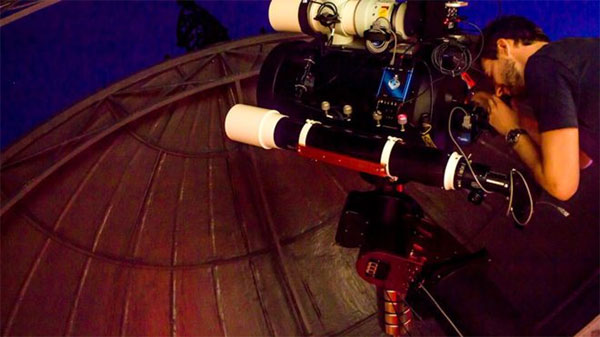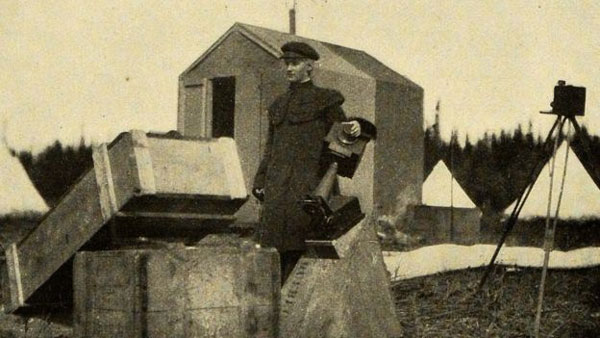[ad_1]
The Royal Observatory Greenwich (ROG) is to start studying the sky again after a break of 60 years.
 |
|
Professional astronomers through to school children will get to use the new telescope set-up — Photo: DR LEE SPROATS
|
British astronomy’s historic home has installed new telescopes in its Grade II listed Altazimuth Pavilion, which has also undergone a restoration.
The new facility is to be named after Annie Maunder, one of the first female scientists to work at the ROG and who made key discoveries about the Sun.
Professionals, amateurs and school children will use the instruments.
Charles II founded the Greenwich site in 1675. Its purpose was to map the stars and compile tables that could then be used for navigation at sea.
It was a working observatory until 1957, after which serious science retreated to the countryside to get away from urban smog and light pollution. But with cleaner air and new technologies, it is now possible for telescopes to take very decent pictures again from the capital, says ROG astronomer Brendan Owens.
“We can use what are called narrow-band filters to get around the light pollution, and then there are the new processing techniques. We can take very fast frame-rate snapshots and use only the steadiest shots to build the final result. It’s known as ‘lucky dip imaging’,” he told BBC News.
 |
|
The new set-up will look at the Sun – just as Annie Maunder did in her day — Photo: NATIONAL MARITIME MUSEUM, LONDON
|
The Annie Maunder Astrographic Telescope (AMAT) is actually a four-in-one instrument.
It comprises three smaller refractors around a top-end, 14-inch (35.5cm) aperture Schmidt-Cassegrain telescope.
Users will be able to study the Sun and the planets in our Solar System, but also look beyond to more distant stars and planetary nebulae (great clouds of gas and dust).
For the system to be used to look at the Sun is particularly apt in the context of Annie Maunder.
Who was Annie Maunder?
One of the “forgotten giants” of British astronomy, she got a job at Greenwich in 1891 working as a “lady computer”, doing supporting calculations for male scientists. But she became an adept observer in her own right, and with her husband, Walter, broke new ground in our understanding of how the Sun goes through its cycles of activity.
Given the times, all the credit went to Walter. That has changed in recent years with reappraisals finally – and properly – recognising her enormous contributions.
“She remained on staff here in Greenwich until 1895 when she had to resign because, as per civil service rules back then, she couldn’t be married,” explained Dr Louise Devoy, the Curator of ROG. “But she remained very active, particularly with the British Astronomical Association, and indeed she came back to Greenwich in WW1 as a volunteer because of the shortage of staff when all the men joined up.
“The new telescope set-up will have a huge capability to image the Sun, with a special hydrogen alpha filter so you can really see activity such as flares (big outbursts).”
 |
|
Annie Maunder pictured on an eclipse expedition in Labrador, Newfoundland — Photo: ALFRED JOHNSON/ANNIE MAUNDER’S FAMILY
|
The new installation comes thanks to a successful appeal for funds.
ROG museum members, private donors and the public gave £150,000 towards the project.
The money has finally enabled proper restoration work to be completed on the Altazimuth Pavilion, which was in urgent need of repair.
“It’s a beautiful Victorian building that suffered major bomb damage. Half the building was obliterated during WWII,” said Brendan Owens.
“It was reconstructed by the time the ROG became a museum, but it was never perfect and over time, brick work crumbled and damp had crept in. When we decided on the restoration, we could have included just museum space but we saw a wonderful opportunity to make it a multi-purpose, 21st-Century observatory.”
Mr Owens said it would take a while to get the new facility running at top speed. Conversations are being held now with universities to see who would like to make use of Greenwich in their studies.
As ever, the ROG wants the public involved as much as possible. Images taken by the AMAT will be streamed online, and content shared with schools through the Peter Harrison Planetarium. There will be workshops at the observatory as well.
The ground floor of the pavilion will have an exhibition space, with a section dedicated to telling the story of Annie Maunder.
Source: BBC
[ad_2]
Source link
